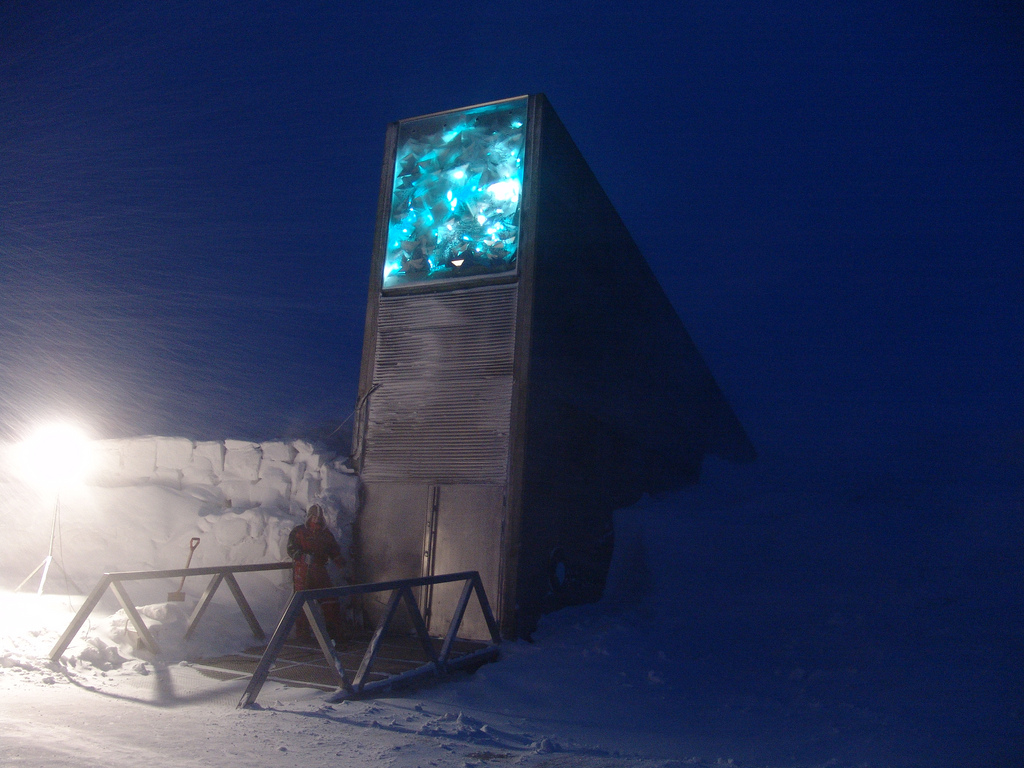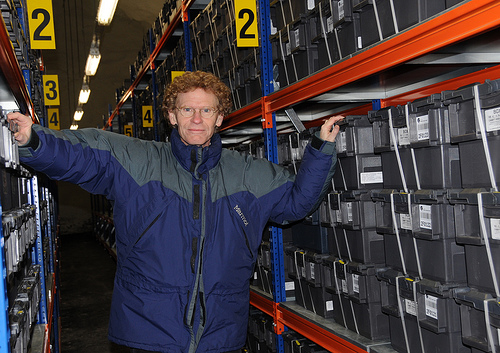Seeds of No Doubt
 Sunday, February 6, 2011 at 03:43AM
Sunday, February 6, 2011 at 03:43AM  The entrance to the Svalbard Global Seed Vault, rising from the permafrost like a Bond villain’s lair. Photo by Mari Tefre/Global Crop Diversity Trust.Seeds are a bit fabulous. They are a valuable source of food products (rice, wheat, corn, flours, oils, alcohol, etc), they are a wonderfully efficient component of plant reproduction and they are a critical supply of the world’s collective plant genome.
The entrance to the Svalbard Global Seed Vault, rising from the permafrost like a Bond villain’s lair. Photo by Mari Tefre/Global Crop Diversity Trust.Seeds are a bit fabulous. They are a valuable source of food products (rice, wheat, corn, flours, oils, alcohol, etc), they are a wonderfully efficient component of plant reproduction and they are a critical supply of the world’s collective plant genome.
Another thing that warrants a degree of excitement is the Svalbard Global Seed Vault (SGSV). If you’re unfamiliar with the seed vault, it was opened in 2008 at Svalbard, the northernmost place on earth that has regular flights (about one a day I believe). The seed vault is positioned about 120 metres inside a mountain on Spitsbergen Island, a location chosen because of its environmental and political stability.
In 2009, The Economist ranked Norway as the most politically stable country in a list of 165 and the area characterised by a lack of tectonic activity. In addition, the permafrost provides temperature stability and at 130 metres above sea level, it is well out of reach of sea level rise, predicted as a result of global warming.
The seeds are contained in four-ply packets, which are heat sealed to exclude moisture. They are housed in refrigerated rooms, kept at a constant -18oC. Power to the vault comes from a coal power station. Should this power supply fail, it is believed the permafrost would greatly slow any resulting warming possibly for weeks. Even then it would only warm to about -3oC (the ambient temperature of the mountain bedrock).
 Cary Fowler, Executive Director of the Global Crop Diversity Trust, surrounded by shelves stocked with stacks of seeds. Photo by Mari Tefre/Global Crop Diversity Trust.Under these conditions it is believed that many seed types could remain viable for hundreds of years, some perhaps for thousands.
Cary Fowler, Executive Director of the Global Crop Diversity Trust, surrounded by shelves stocked with stacks of seeds. Photo by Mari Tefre/Global Crop Diversity Trust.Under these conditions it is believed that many seed types could remain viable for hundreds of years, some perhaps for thousands.
Should current crop species fall victim to disease or if climate change alters conditions in a particular location such that a particular species is no longer able to grow there, it is to seed banks such as the SGSV that we will need to turn for alternatives. This is just one of the many reasons to maintain biodiversity, as there are tens of thousands of edible, but presently uncultivated crop species.
Several of Australia’s seed banks are no longer being maintained and there were never very many in the first place. This disappointing situation is explored in the article from Cosmos from September last year. It is perhaps bittersweet then, that later this month Australia will make it’s first deposit in the SGSV. Dr Tony Gregson and Prof. Edwina Cornish will deliver samples from Horsham in Victoria.
 Seeds in bags, prepared for transport to Svalbard. Photo by WARDA.It should also be that the SGSV is a very cool looking facility as the photos on this page show. There are more photos at the Global Crop Diversity Trust Flickr page. There is also loads of information about global efforts to secure seed and plant diversity at the Global Crop Diversity Trust site.
Seeds in bags, prepared for transport to Svalbard. Photo by WARDA.It should also be that the SGSV is a very cool looking facility as the photos on this page show. There are more photos at the Global Crop Diversity Trust Flickr page. There is also loads of information about global efforts to secure seed and plant diversity at the Global Crop Diversity Trust site.
It’s been many years since I was in Scandinavia and this one place that I’d love to visit, not just because it’s such a great looking place, but also for the adventure and because of its invaluable role in maintaining global biodiversity.

Reader Comments